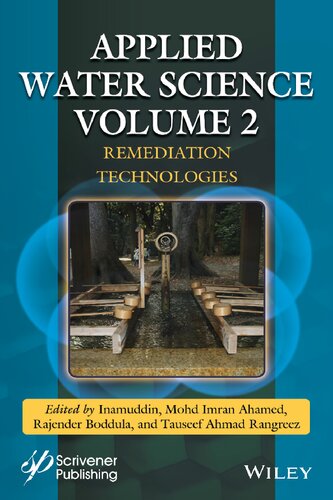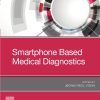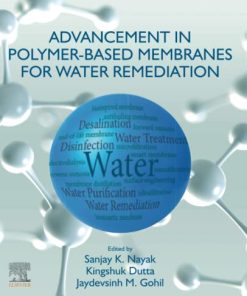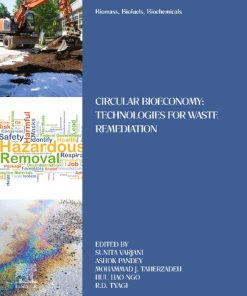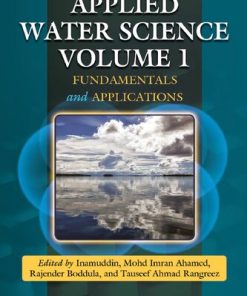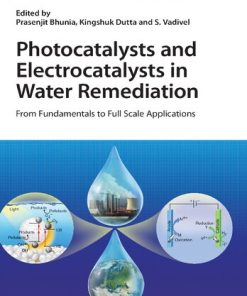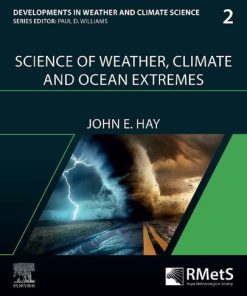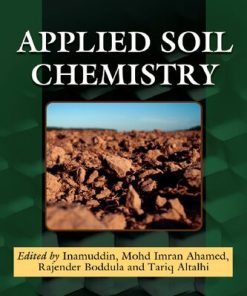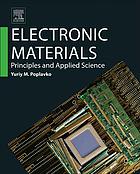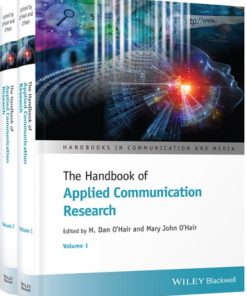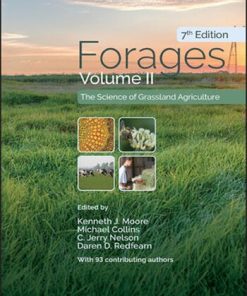Applied Water Science, Volume 2: Remediation Technologies Inamuddin
$50.00 Original price was: $50.00.$25.00Current price is: $25.00.
Applied Water Science, Volume 2: Remediation Technologies – Ebook Instant Download/Delivery ISBN(s): 9781119724735,1119724732
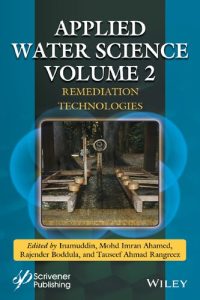
Product details:
- ISBN-10 : 1119724732
- ISBN-13 : 978-1119724735
- Author: Inamuddin, Mohd Imran Ahamed, Rajender Boddula, Tauseef Ahmad Rangreez
The second volume in a new two-volume set on applied water science, this book provides understanding, occurrence, identification, toxic effects and control of water pollutants in an aquatic environment using green chemistry protocols. The high rate of industrialization around the world has led to an increase in the rate of anthropogenic activities which involve the release of different types of contaminants into the aquatic environment. This generates high environmental risks, which could affect health and socio-economic activities if not treated properly. There is no doubt that the rapid progress in improving water quality and management has been motivated by the latest developments in green chemistry. Over the past decade, sources of water pollutants and the conventional methods used for the treatment of industrial wastewater treatment have flourished.
Table contents:
1 Insights of the Removal of Antibiotics From Water and Wastewater: A Review on Physical, Chemical, and Biological Techniques 1
Ali Khadir, Amin M. Ramezanali, Shabnam Taghipour and Khadijeh Jafari
1.1 Introduction 2
1.2 Antibiotic Removal Methods 4
1.2.1 Aerobic Biological Treatment 4
1.2.2 Anaerobic Biological Treatment 8
1.2.3 Adsorption Processes 12
1.2.3.1 Activated Carbon and its Composites 12
1.2.3.2 Magnetic Nanomaterials/Adsorbents 15
1.2.4 Advanced Oxidation Processes 18
1.2.4.1 Fenton Type Processes 19
1.2.4.2 Peroxone 24
1.2.4.3 Photocatalytic Degradation 27
1.2.5 Electrocoagulation 30
1.3 Conclusion 32
References 33
2 Adsorption on Alternative Low-Cost Materials-Derived Adsorbents in Water Treatment 49
Wojciech Stawiński and Katarzyna Wal
2.1 Introduction 50
2.2 Water Treatment 50
2.3 Adsorption 51
2.4 Application of Low-Cost Waste-Based Adsorbents in Water Treatment 51
2.4.1 Bark 52
2.4.1.1 Eucalyptus 52
2.4.1.2 Pine 52
2.4.1.3 Other 55
2.4.2 Coffee 55
2.4.3 Feather 58
2.4.4 Husks or Hulls 60
2.4.4.1 Peanut 62
2.4.4.2 Rice 62
2.4.4.3 Other 63
2.4.5 Leaves 63
2.4.6 Peels 65
2.4.6.1 Banana 65
2.4.6.2 Citruses 67
2.4.6.3 Garlic 69
2.4.6.4 Litchi 70
2.4.6.5 Other 71
2.4.7 Rinds 71
2.4.8 Seeds 75
2.4.9 Stones or Pits 78
2.4.9.1 Date 78
2.4.9.2 Olive 81
2.4.9.3 Other 81
2.4.10 Tea 82
2.5 Disadvantages 84
2.6 Conclusions 86
References 86
3 Mathematical Modeling of Reactor for Water Remediation 107
Hamidreza Bagheri, Ali Mohebbi, Maryam Mirzaie and Vahab Ghalandari
3.1 Introduction 108
3.2 Water Remediation 109
3.2.1 Water Remediation Techniques 110
3.3 Reactor Modeling 112
3.3.1 Modeling of Multi-Phase Flows 118
3.3.2 Governing Equations for Multiphase Models 124
3.3.2.1 Photocatalytic Reactors 128
3.3.2.2 Bubble Column 132
3.3.2.3 Fluidized Bed Reactors 137
3.3.2.4 Adsorption Column 142
3.3.2.5 Air Sparging Technology 143
3.3.2.6 Electrochemical Reactors 146
3.4 Conclusions 154
References 156
4 Environmental Remediation Using Integrated MicrobialElectrochemical Wetlands: iMETLands 171
A. Biswas and S. Chakraborty
4.1 Introduction 172
4.2 Constructed Wetland–Microbial Fuel Cell (CW–MFC) System 174
4.2.1 Role of Redox Gradient 175
4.2.2 Role of Microorganisms 176
4.2.3 Role of WW Strength 176
4.2.4 Role of Wetland Vegetation 176
4.3 iMETLand State of the Art 177
4.3.1 iMETLand as a Potential Treatment Unit for Industrial Wastewater 184
4.4 Conclusion, Challenges and Future Directions 184
References 185
5 Forward Osmosis Membrane Technology for the Petroleum Industry Wastewater Treatment 191
Shahryar Jafarinejad and Nader Vahdat
5.1 Introduction 191
5.2 Forward Osmosis Membrane Process 192
5.2.1 Main Factors in FO Technology 193
5.3 FO Technology for the Petroleum Industry Wastewater Treatment 194
5.3.1 Literature Review of FO Technology for the Petroleum Industry Wastewater Treatment 194
5.3.2 Recent Advances in FO Membranes 205
5.4 Challenges Ahead and Future Perspectives 206
5.5 Conclusions 207
References 208
6 UV/Periodate Advanced Oxidation Process: Fundamentals and Applications 215
Slimane Merouani and Oualid Hamdaoui
6.1 Introduction 216
6.2 Periodate Speciation in Aqueous Solution 217
6.3 Generation of Reactive Species Upon UV-Photolysis of Periodate 218
6.4 Application of UV/IO–4 for Organics Degradation 223
6.5 Scavenging of the Reactive Species Under Laboratory Conditions 234
6.6 Factors Influencing the Degradation Process 236
6.6.1 Initial Periodate Concentration 236
6.6.2 Irradiation Intensity 237
6.6.3 Initial Pollutant Concentration 237
6.6.4 pH 238
6.6.5 Temperature 240
People also search:
applied water
applied water solutions
applied hydrogeology 5th edition pdf
applied hydrogeology solutions
applied water watertown sd
a 20 ml volume of previously boiled
You may also like…
Uncategorized
Biology and other natural sciences - Biotechnology
Chemistry - Technical & Industrial Chemistry
Uncategorized
dictionaries & phrasebooks
Biology and other natural sciences - Plants: Agriculture and Forestry
Forages, Volume 2: The Science of Grassland Agriculture Kenneth J. Moore (Editor)


